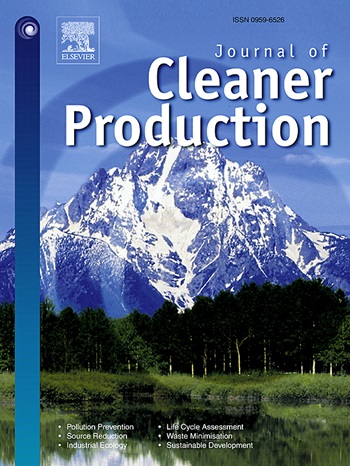Cement roof tiles manufactured with PET waste: Experimental tests and thermal building simulations
IF 9.7
1区 环境科学与生态学
Q1 ENGINEERING, ENVIRONMENTAL
引用次数: 0
Abstract
A number of studies have demonstrated the feasibility of recycling Polyethylene Terephthalate (PET) as an input for manufacturing mortar or concrete artifacts. In this study, the thermal performance of extruded cement tiles manufactured with partial replacement of fine aggregate using PET flakes was gauged. Physical properties (solar absorptance) and thermal properties (emissivity, conductivity, and thermal capacity) of tiles with and without PET incorporation were evaluated. Using characteristic properties obtained from measured data, thermal simulations were performed for a single-family building intended for the Brazilian social housing. Surface Heat Balance Approach was employed to identify the impact of using different tiles as an external component in two different roof geometries: without a ceiling and with an attic space as buffer zone. The indoor Standard Effective Temperature was also assessed so as to inform potential benefits of the PET tiles for both roof geometries in terms of thermal comfort across the year and during an overheating period. Notably, due to the texture and coloring of the PET flakes, there was a reduction in solar absorptance and an increase in thermal emissivity. Replacing sand by PET into the cement matrix led to a 12.5% reduction in thermal conductivity and a 30% increase in thermal capacity for the tiles. In both roof geometries simulated, the adoption of PET tiles consistently improved thermal insulation, slightly reducing heat gains through the roof system. PET tiles and attic combined can reduce the severity and intensity of the indoor environments during overheating events, providing conditions that are more tolerable to occupants. Therefore, cement tiles incorporating PET represent a technically viable strategy for promoting urban sustainability, while also preventing the release of PET waste into illegal areas or landfills, thereby complying with the 2030 Agenda for Sustainable Development.
求助全文
约1分钟内获得全文
求助全文
来源期刊

Journal of Cleaner Production
环境科学-工程:环境
CiteScore
20.40
自引率
9.00%
发文量
4720
审稿时长
111 days
期刊介绍:
The Journal of Cleaner Production is an international, transdisciplinary journal that addresses and discusses theoretical and practical Cleaner Production, Environmental, and Sustainability issues. It aims to help societies become more sustainable by focusing on the concept of 'Cleaner Production', which aims at preventing waste production and increasing efficiencies in energy, water, resources, and human capital use. The journal serves as a platform for corporations, governments, education institutions, regions, and societies to engage in discussions and research related to Cleaner Production, environmental, and sustainability practices.
 求助内容:
求助内容: 应助结果提醒方式:
应助结果提醒方式:


